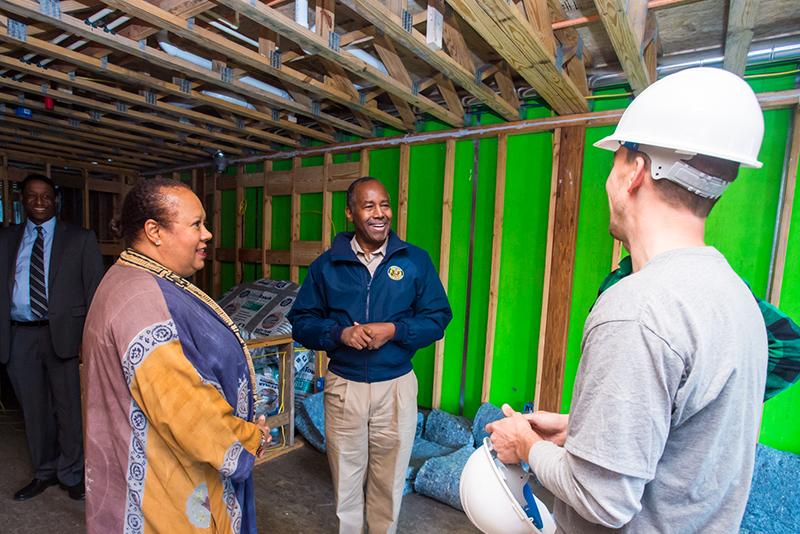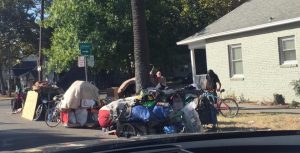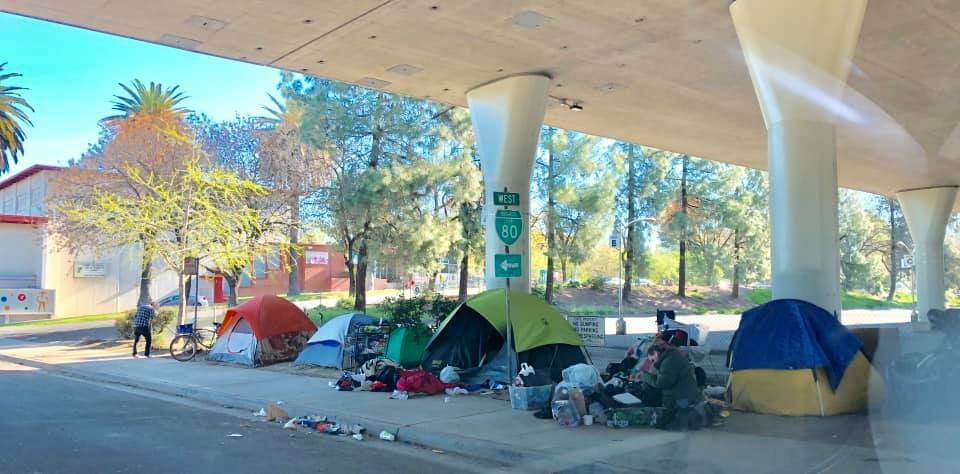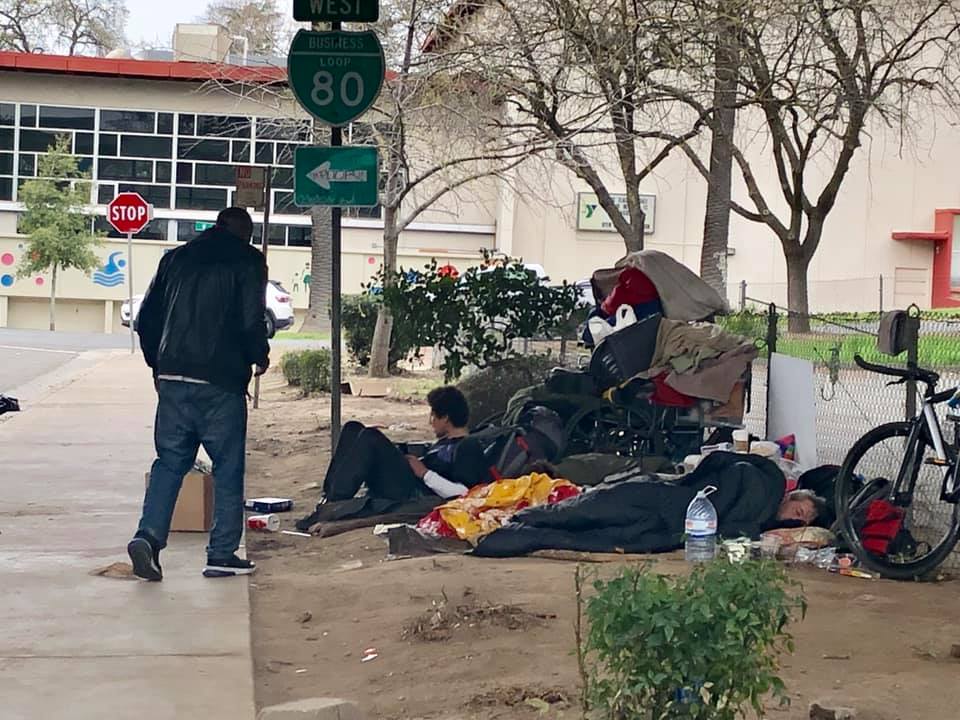
Dr. Ben Carson, HUD Secretary (HUD)
Governor: More Federal Spending on Housing Will Fix California’s Homeless Epidemic
Sacramento ‘homeless’ non-profit is a pass-through of $14 million annually in HUD funding
By Katy Grimes, December 16, 2019 9:44 am
‘California cannot spend its way out of this problem using Federal funds.’
“More people are sleeping on sidewalks in Sacramento – even as federal spending rises,” the Sacramento Bee reported Monday. “Federal lawmakers say they understand the gravity of the problem. The issue got unusually unified political support this year as House and Senate budget-writers quietly agreed on more spending.”
“Advocacy groups dealing daily with the homeless generally praise the effort.”
Of course advocacy groups praise the “more spending” effort. They are in line to receive the money.
But the homeless problem isn’t “housing,” it is drug addiction and mental illness, and everyone claiming affordable housing is the barrier knows that is a lie.
When President Donald Trump and Housing and Urban Development Secretary Dr. Ben Carson rejected Gov. Gavin Newsom’s and Sacramento Mayor Darrell Steinberg’s letter requesting additional federal funding for homelessness, the Senate Appropriations Committee passed another $2.8 billion for homeless assistance programs via HUD.
Dr. Carson’s letter (below) to Gov. Newsom and Mayor Steinberg was crystal clear:
Your letter seeks more Federal dollars for California from hardworking American taxpayers but fails to admit that your State and local policies have played a major role in creating the current crisis. If California’s homeless population had held in line with overall population trends, America’s homeless rate would have decreased. Instead, the opposite has happened, as California’s unsheltered homelessness population has skyrocketed as a result of the State’s overregulated housing market, its inefficient allocation of resources, and its policies that have weakened law enforcement.
An overregulated housing market drives up housing costs and increases homelessness rates. As a result, the cost of Federal housing subsidies increases and taxpayers can support fewer families.
Compounding the homelessness crisis, California has undercut the ability of police officers to enforce quality-of-life laws, remove encampments, and connect our most vulnerable populations with the supportive services they need to get off the streets.
California must also address mental health. In 2018, 28 percent of California’s homeless suffered from a severe mental illness. Despite this, California has since 1995 divested itself of nearly 30 percent of its acute care psychiatric hospital beds, which limits California’s ability to place the mentally ill into these dwindling facilities.
California cannot spend its way out of this problem using Federal funds.
I hope you and other leaders throughout your State will do more to join us in these efforts, taking action with respect to all of the areas outlined in this letter.
‘Homeless’ or Drug Addicted Vagrants?

Last week, California Globe had the opportunity to speak with several Sacramento police officers about the homeless/drug/mental illness explosion. As every other police officer we’ve spoken with says, the drug addicts don’t want housing. They don’t want anything other than money to buy drugs. When they are offered shelter, the police said the drug addicts always refuse.
California has roughly 134,000 homeless people that we know of, amounting to one-quarter of the nation’s total homeless population.
In Will $1 Billion Spending on California’s Homeless Fix the Problem?, California Globe covered a myriad of issues surrounding California’s homeless explosion including how tiny houses in Los Angeles haven’t worked out as planned; they became tiny crack houses. The Homeless encampments along the sides of levees in Sacramento are now damaging the flood control structures, and also in the state’s Capitol, the homeless live in parks, in tents along rivers, on the streets and in alleys, and were sleeping at City Hall at night, after police were chastised for chasing them away.
With Gov. Gavin Newsom proposing in his May Budget Revise $650 million in grants to homelessness agencies and local government to help fund emergency shelters, housing assistance, and new construction, adding up to $1 billion in spending on the homeless in the Golden State, where is the money actually going?
Show Me the Money
Sacramento closed the only city-run homeless shelter April 30 after spending $5 million on it. There were just 37 homeless people using it when it closed. The City opened another homeless facility in July, “when the Capitol Park Hotel is set to open downtown with up to 180 beds,” the Sacramento Bee reported. The City spent more than $23 million to open a 180-bed temporary homeless shelter at the Capitol Park Hotel downtown, where more than 90 elderly and disabled people were living. They were ousted to make way for the homeless.
And last week, Sacramento City Council and the Sacramento Housing and Redevelopment Agency announced they are planning to open cabin-style shelters with services for 100 homeless people somewhere in north Sacramento by mid-March.
What they should be opening is drug rehabilitation centers and mental health facilities. The primary source of “homelessness” is not housing affordability, but drug addiction and mental illness.
The Bee reports, “Sacramento’s survey found 5,570 people are homeless on a given night, up 19% from 2017. Of those people, 1,670 were sheltered and 3,900, or 70%, were unsheltered. That’s double the national percentage of 35% and despite millions of dollars in both state and local funding spent to address the problem.”
The survey was conducted by Sacramento Steps Forward. “As one of the only nonprofit organizations in the country responsible for managing U.S. Housing and Urban Development (HUD) funds for homelessness granted under the The Homeless Emergency Assistance and Rapid Transition to Housing (HEARTH) Act, we are uniquely positioned to collaborate with our Continuum of Care partners and develop regional solutions.”
Sacramento Steps Forward was originally formed by former Sacramento Mayor Kevin Johnson in 2009, in tandem with then-President Barack Obama’s “housing first” policy in the HEARTH Act.
Johnson’s Sacramento Steps Forward said it is “an initiative to combat the immediate crisis of providing winter shelter to the homeless in our region. Sacramento Steps Forward has since transformed into one of the region’s leading nonprofits committed to addressing the multi-faceted challenge of ending homelessness in the Sacramento community,” they claim.
Except Sacramento’s “homeless” has quadrupled since 2009, even with Sacramento Steps Forward’s income of $14,309,325, according to the 2017 IRS Form 990. The Executive Director made $150,000 in 2017, and $163,500 in 2016, and the non-profit spent more than $1.3 million in annual salaries in 2017, and $1.4 in 2016. They issued $10 million and $9 million in grants in 2017 and 2016 respectively.
“During 2016, the Organization passed-through $9,935,805 in HUD grants to local nonprofit agencies which helped 2,232 individuals move out of emergency shelters and off the street into stable housing,” the IRS Form 990 reported.
In 2013, Sacramento Steps Forward said its mission was: “To ensure that individuals and families experiencing homelessness or the risk of homelessness are able to access housing services and resources on their path to economic stability.” In 2013 the non-profit had an annual income of $5,170,488 from HUD, and the Executive Director was not paid such a high salary as to warrant disclosure on the IRS Form 990. On the 2013 IRS form, they even list their grant recipients.
And that is the problem: Sacramento Steps Forward has grown into a giant pass-through, shaving off $8 million each year from HUD funding. If $1.4 million goes to salaries, and $10 million is granted out, where is the rest of the millions going?
And this is just HUD funding. What about federal Health and Human Services funding?
Many correctly conclude that there is too much money to be made in the homeless business for any real solutions to be implemented.
SOHUD_Response_POTUS- Hypocrite Alert: Gov. Newsom Blames Trump For Abandoning LA Fire Survivors - December 5, 2025
- Gov Newsom ‘Bends the Knee’ to Trump After Maligning President at NYT Event - December 4, 2025
- Trump Administration to Withhold SNAP Funds From Democrat States - December 3, 2025





Why does the State with a 3-trillion dollar economy, the largest in the US, need “Federal” (other State’s) money for low-income housing? What are they doing with their own (presumably citizen’s) money?????
They are padding the shortfall in public union retirement budgets, as they support the care and feeding of the wave of poor immigrants and their dependents. The transfer of wealth from the middle class to the poor is one of the best kept secrets in California.
California is also very close to attaining the coveted last place in the USA in education.
One party state + one party media = corruption.
Papa88
Four months from the Secretary’s letter and no reply from the four officials addressed. At least some kind of reply would demonstrate common courtesy to a Washington Cabinet Secretary informing them you have created and managed inhumane living environment for years. You just go through the motions working and hoping more money will come. This is criminal!